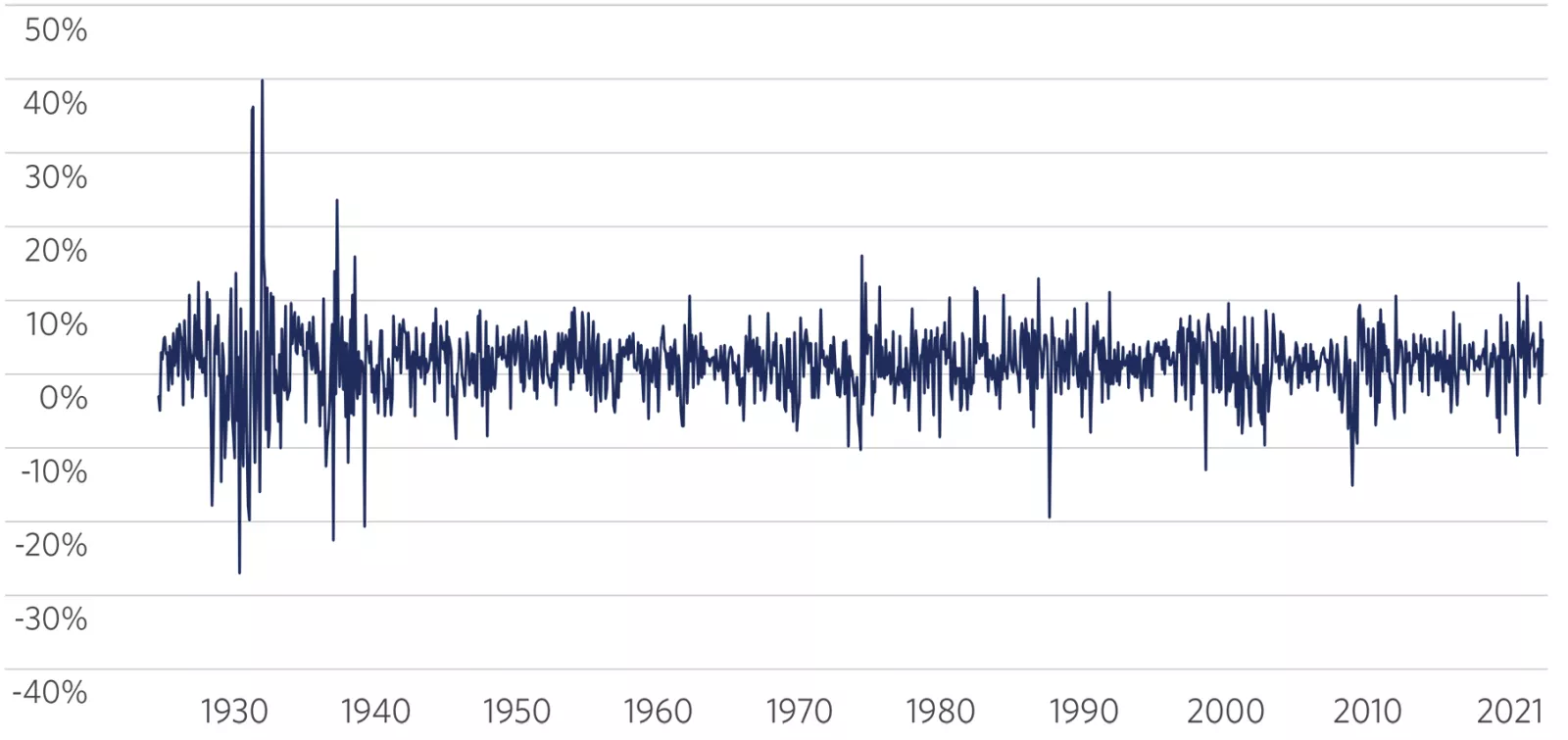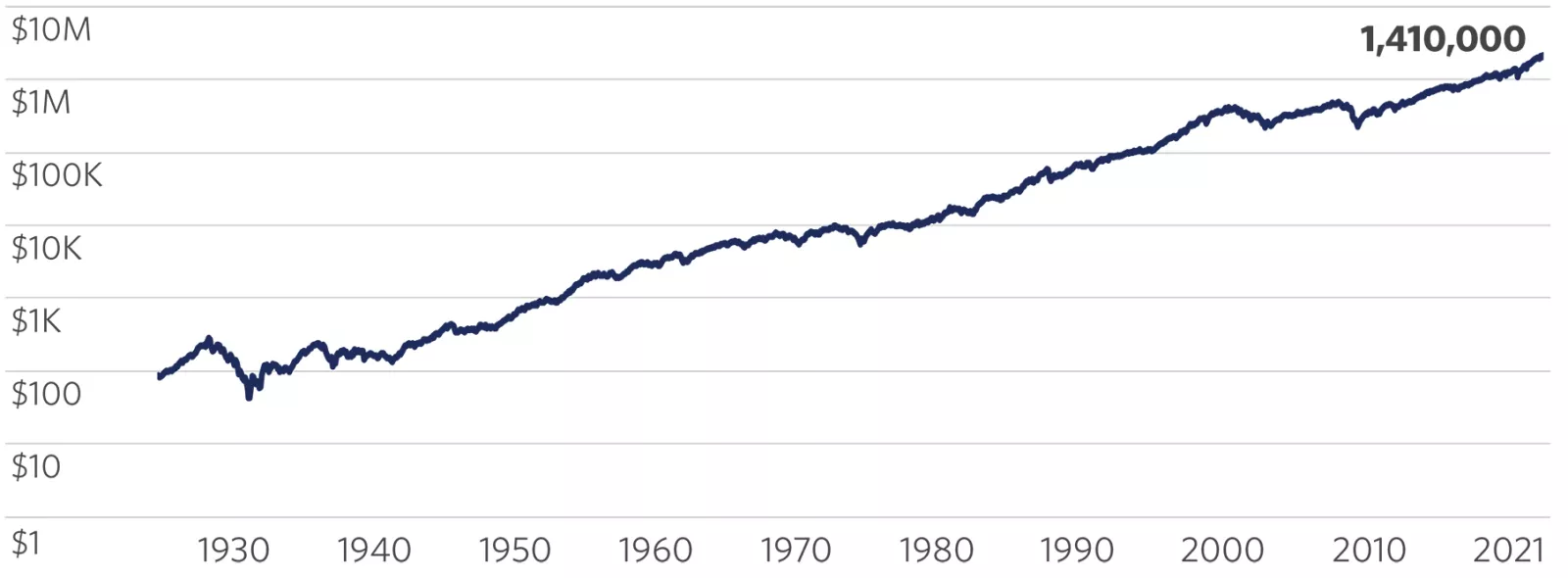The graphic above defines near-term income, which consists of cash and short-term fixed-income investments; medium-term income, which includes intermediate and longer-term bonds and fixed-income investments; and long-term income, which includes stocks and growth investments.
Taking a timeout
Understanding key pitfalls for investors and how to avoid them

Meagan Dow, CFA®, CFP®
Senior Strategist, Client Needs Research
Too often, our emotions can be the biggest barrier to our investment success. In these situations, it’s important to take a timeout and remember why you’re investing: your retirement, your child’s education, your legacy. A short-term market decline doesn’t change these long-term goals. You can learn more in our Webinar, "Investing and Emotions".

The graphic above reminds investors that taking a timeout can help you spot behaviors that may create obstacles to meeting your goals and enable you to avoid emotional investment decisions.

The graphic above reminds investors that taking a timeout can help you spot behaviors that may create obstacles to meeting your goals and enable you to avoid emotional investment decisions.
The result of emotional investing
Why is it so important to be on your best investing behavior? Poor investing behavior can lead to insufficient diversification among different types of assets, chasing market performance, and moving into and out of the markets (often at the wrong time). Not surprisingly, the typical result of these behaviors is poor long-term performance, which could lead to the biggest risk of all: not reaching your long-term financial goals.
The consequences may be even more dramatic than you think. For example, the average annual return for a balanced portfolio (65% equity and 35% fixed income) over the past 30 years was 8.1%. However, the average U.S. investor received a 5.2% return because of investing behavior. But with the power of compounding, the difference wasn’t simply 2.9% a year; it could have been about $600,000 over that 30-year time frame.
When you feel your emotions getting the better of you, take a timeout and work with your financial advisor to review your goals before making what could be an emotional investing decision. Your portfolio and your future self will thank you.

The two bars on the left compare the average annual return of a 35% stocks/65% bonds investment over a 30-year period ending in 2023 under two different assumptions: Using the return of benchmark stock and bond indexes (8.1%) and the return of the average equity and bond U.S. investor (5.2%). The two bars on the right show that an initial investment of $100,000 would have grown to $1,045,000 based on the benchmark’s return, but to only $455,000 for the average investor.

The two bars on the left compare the average annual return of a 35% stocks/65% bonds investment over a 30-year period ending in 2023 under two different assumptions: Using the return of benchmark stock and bond indexes (8.1%) and the return of the average equity and bond U.S. investor (5.2%). The two bars on the right show that an initial investment of $100,000 would have grown to $1,045,000 based on the benchmark’s return, but to only $455,000 for the average investor.
Investing behavior: Heading to (or staying on) the sidelines
Whether it’s the economy, the national deficit or market fluctuations, there will always be headlines that can distract you from focusing on your long-term goals. Trying to avoid potential stock market declines may lead to the following bad behaviors.
Trying to time the market
Some investors may try to sell to avoid additional declines. But to time the market successfully, you must get two decisions right: When to get out, and when to get back in. Getting one right is difficult; getting two right is nearly impossible.
Holding too much in cash
Others may hold too much in cash, thinking they are avoiding risk. However, this could increase the risk of not having enough growth in their portfolios to meet their goals or offset inflation. Not staying fully invested or jumping into and out of the stock market can seriously affect performance, since many investors often get out after declines and then miss the positive moves. The effects of missing the best days can be substantial, as shown in the following chart.

This chart shows that a $10,000 investment in the S&P 500 from 1994 to 2023 would have grown to $180,000 for investors who remained fully invested for the entire period. By comparison, the same investment would have grown to just $85,000 for those who missed the market’s 10 best days, $50,000 for those who missed the 20 best days, $30,000 for those who missed the 30 best days, $20,000 for those who missed the 40 best days and $15,000 for those who missed the 50 best days.

This chart shows that a $10,000 investment in the S&P 500 from 1994 to 2023 would have grown to $180,000 for investors who remained fully invested for the entire period. By comparison, the same investment would have grown to just $85,000 for those who missed the market’s 10 best days, $50,000 for those who missed the 20 best days, $30,000 for those who missed the 30 best days, $20,000 for those who missed the 40 best days and $15,000 for those who missed the 50 best days.
How to avoid this behavior
Avoid the headlines
When negative events occur, the media can appear to add to the drama by using strong headlines or highlighting historical information about previous issues. At times, this includes emphasizing poor market performance in ways that can set off alarm bells among investors. However, the BusinessWeek cover shown here preceded one of the strongest equity markets in history.
Focus on your long-term goals and not the ever-changing headlines, and remember we’ve successfully navigated tough periods before.

Credit 1 - BusinessWeek cover used with permission of Bloomberg L.P. Copyright © 2013. All rights reserved.
Credit 2 - TIME magazine, January 10, 1983. © 1983 Time Inc. used under license. Time magazine and Time Inc. are not affiliated with, and do not endorse products or services of, Edward Jones.
This photo shows two magazines with covers focused on negative market news. Time magazine, on the left, features a story titled “The Debt Bomb: The Worldwide Peril of Go-Go Lending,” while BusinessWeek, on the right, touts an article headlined “The Death of Equities: How inflation is destroying the stock market.”

Credit 1 - BusinessWeek cover used with permission of Bloomberg L.P. Copyright © 2013. All rights reserved.
Credit 2 - TIME magazine, January 10, 1983. © 1983 Time Inc. used under license. Time magazine and Time Inc. are not affiliated with, and do not endorse products or services of, Edward Jones.
This photo shows two magazines with covers focused on negative market news. Time magazine, on the left, features a story titled “The Debt Bomb: The Worldwide Peril of Go-Go Lending,” while BusinessWeek, on the right, touts an article headlined “The Death of Equities: How inflation is destroying the stock market.”
Know yourself
Talk with your financial advisor to better understand your attitude toward risk and how you may react to specific events. By knowing in advance how you may react, you can be better prepared when
the inevitable short-term declines occur.
Understand the risks of not investing
The biggest risk you may face is not reaching your long-term goals. Assuming a modest 3% inflation rate, prices will double during a normal 25-year retirement period. Look to growth investments to help keep pace with inflation.*
Investing behavior: Chasing performance
When the media hype the latest hot investment or highlight dramatic declines in the market, we are often tempted to chase the winners and sell the losers. But this emotional response can lead to buying investments at market peaks and selling them at market lows — a recipe for underperformance.

This graphic illustrates the effects of buying stocks when values are climbing and selling when they decline. The chart on the left shows that $1 billion in technology mutual funds purchased from December 1992 to December 1994 grew 52% per year from December 1994 to December 1999, fueling optimism. This led to a period of euphoria, with investors pouring $20.5 billion into tech funds from December 1997 to December 1999 due to their strong performance. From December 1999 to December 2001, however, these areas underperformed, falling in value 34% per year.
The graphic on the right shows investors buying $158 billion in U.S. stock mutual funds from March 2002 to March 2004, only to suffer an average annual drop of 5% per year over the next five years. Amid this decline, investors sold $122 billion in funds. But markets turned optimistic in March 2009, climbing 32% per year, on average, over the next two years.

This graphic illustrates the effects of buying stocks when values are climbing and selling when they decline. The chart on the left shows that $1 billion in technology mutual funds purchased from December 1992 to December 1994 grew 52% per year from December 1994 to December 1999, fueling optimism. This led to a period of euphoria, with investors pouring $20.5 billion into tech funds from December 1997 to December 1999 due to their strong performance. From December 1999 to December 2001, however, these areas underperformed, falling in value 34% per year.
The graphic on the right shows investors buying $158 billion in U.S. stock mutual funds from March 2002 to March 2004, only to suffer an average annual drop of 5% per year over the next five years. Amid this decline, investors sold $122 billion in funds. But markets turned optimistic in March 2009, climbing 32% per year, on average, over the next two years.
How to avoid this behavior
Stay diversified
Instead of trying to find the next hot investment and chasing performance, it’s important to spread your investments across assets and remain diversified. This helps ensure you have different types of assets and investments — each of which may perform differently at different times. By chasing the leading asset class, portfolios may not only end up with a lower return but may also become much less diversified than we would recommend. While diversification cannot guarantee a profit or protect against loss, it can help smooth out market ups and downs, potentially providing a better long-term experience.
The chart shows $25,000 invested each year into either a 65% stocks/35% bonds portfolio or the previous year’s best-performing asset class (winners).

This bar chart compares the performance of $25,000 invested each year from 2003–23 into either a 65% stocks/35% bonds portfolio or the previous year’s best-performing asset class (previous year’s winner). The stock/bond portfolio would have grown to $1,470,000, whereas the other portfolio would have increased to just $1,200,000.

This bar chart compares the performance of $25,000 invested each year from 2003–23 into either a 65% stocks/35% bonds portfolio or the previous year’s best-performing asset class (previous year’s winner). The stock/bond portfolio would have grown to $1,470,000, whereas the other portfolio would have increased to just $1,200,000.
Investing behavior: Focusing on the short term
It’s important to focus on the long term, but day-to-day fluctuations can often get in the way, causing us to:
Fixate on a certain point in time
Depending on the vantage point, the same situation may look very different. For example, some investors sold in 2008 because their portfolios had fallen from an all-time high value, even though their performance may still have been on track and well above where they initially began.
Base decisions on how the information is framed
Decisions can be influenced by how a situation is presented. For example, assuming a Dow Jones Industrial Average value of 30,000, one can say, “Dow plummets 300 points,” or, “Dow declines 1%.” Both describe the same situation, but the first sounds worse. With the Dow exceeding 30,000, we should expect larger point moves, but how the media present market movements can lead investors to make emotional short-term decisions.
It all depends on your perspective, as highlighted below. The graphs show the same performance but a different perspective. The top graph shows monthly fluctuations in the S&P 500, and the bottom shows its long-term performance — illustrating why it’s important to keep a long-term focus.


Value of $100 invested in the S&P 500 Total Return Index from 1926 to 2023

future results. Values rounded to the nearest $5,000.
The chart on top shows total monthly returns in the S&P 500 from 1926 to 2023. Monthly performance ranged from a maximum loss of nearly 30% to a maximum gain of more than 40%, highlighting short-term volatility.
The chart on the bottom showcases the long-term performance of a $100 investment in the S&P 500 over the same period. The initial investment expands fairly steadily — except for a sharp drop during the Great Depression — to $1,456,000 in 2023.

future results. Values rounded to the nearest $5,000.
The chart on top shows total monthly returns in the S&P 500 from 1926 to 2023. Monthly performance ranged from a maximum loss of nearly 30% to a maximum gain of more than 40%, highlighting short-term volatility.
The chart on the bottom showcases the long-term performance of a $100 investment in the S&P 500 over the same period. The initial investment expands fairly steadily — except for a sharp drop during the Great Depression — to $1,456,000 in 2023.
How to avoid this behavior
Set realistic expectations and focus on your goals
The stock market averages a 10% correction every year. There have been 33 bear markets and 33 recoveries since 1928. Over a 25-year retirement, you could experience eight to nine bear markets on average. So, market declines, while unpleasant, are in fact normal. Measure your performance as progress toward your long-term goals rather than in day-to-day fluctuations.
Understand the purpose of your investments
In retirement, some investments provide you with income today. Others are there to help provide income many years from now. Each serves a crucial role in ensuring your money lasts as long as you need it.


Meagan Dow
Meagan Dow is a Senior Strategist on the Client Needs Research team at Edward Jones. The Client Needs Research team develops and communicates advice and guidance for client needs, including retirement, education, preparing for the unexpected and leaving a legacy. Meagan has nearly 15 years of financial services and investment experience. She is a contributor to the Edward Jones Perspective newsletter and has been quoted in various publications.
Important Information:
* Investing in equities involves risk, the value of your shares will fluctuate, and you may lose principal.
This information is for educational and illustrative purposes only and should not be interpreted as specific investment advice. Investors should make investment decisions based on their unique investment objectives and financial situation.